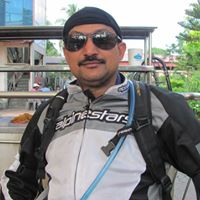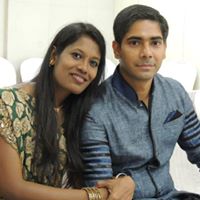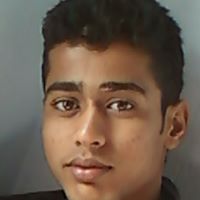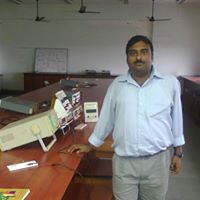Anirban Chatterjee
from Redwood City, CA
Anirban Chatterjee Phones & Addresses
- Redwood City, CA
- Jersey City, NJ
- Menlo Park, CA
Work
-
Company:Cisco systems incJan 2011
-
Position:Product management
Education
-
School / High School:Leavey School of Business2007
-
Specialities:Master of Business Administration
Skills
cloud • paas • webservices • SAAS • collaboration • product strategy
Wikipedia References

Anirban Chatterjee
Resumes

Senior Data Scientist
view sourceLocation:
Jersey City, NJ
Industry:
Management Consulting
Work:
Aetna A Cvs Health Company
Senior Data Scientist
Exl
Manager
Exl
Lead Assistant Manager
Exl Apr 2016 - Sep 2017
Senior Business Analyst
Exl Aug 1, 2014 - Apr 2016
Business Analyst
Senior Data Scientist
Exl
Manager
Exl
Lead Assistant Manager
Exl Apr 2016 - Sep 2017
Senior Business Analyst
Exl Aug 1, 2014 - Apr 2016
Business Analyst
Education:
Indian Institute of Engineering Science and Technology (Iiest), Shibpur 2010 - 2014
Bachelor of Engineering, Bachelors, Computer Engineering Hindu School , Kolkata 2003 - 2010
Bachelor of Engineering, Bachelors, Computer Engineering Hindu School , Kolkata 2003 - 2010
Skills:
Java
C++
C
Microsoft Office
Sql
Programming
Matlab
Microsoft Excel
Microsoft Word
Html
Data Structures
Business Analysis
Powerpoint
Customer Service
Python
Machine Learning
Sas Programming
Analytics
Statistics
Oracle
C++
C
Microsoft Office
Sql
Programming
Matlab
Microsoft Excel
Microsoft Word
Html
Data Structures
Business Analysis
Powerpoint
Customer Service
Python
Machine Learning
Sas Programming
Analytics
Statistics
Oracle
Languages:
English
Bengali
Hindi
Bengali
Hindi
Certifications:
Cognizant Certified Student
Introduction To Data Science In Python
Cognizant Technology Solutions
Introduction To Data Science In Python
Cognizant Technology Solutions

Anirban Chatterjee
view source
Jalpaiguri Zilla School
view sourceWork:
Jalpaiguri Zilla School

Anirban Chatterjee
view source
Developer At Kpmg Llp
view sourcePosition:
Developer at KPMG LLP
Location:
Greater New York City Area
Industry:
Information Technology and Services
Work:
KPMG LLP
Developer
Developer
Education:
Syracuse University 2000 - 2006

Anirban Chatterjee Sunnyvale, CA
view sourceWork:
Cisco Systems Inc
Jan 2011 to Present
Product Management Oracle
Redwood Shores, CA
2006 to Dec 2010
Senior Product Manager Oracle
Redwood Shores, CA
2002 to 2006
Senior Member of Technical Staff GE Financial Assurance / Satyam
Richmond, VA
2001 to 2002
Senior Software Consultant American Marketing Association / Satyam
Chicago, IL
2000 to 2001
Software Consultant State Farm Insurance / Satyam
Hyderabad, Andhra Pradesh
1997 to 2000
Software Consultant Technical Lead
Jan 2011 to Present
Product Management Oracle
Redwood Shores, CA
2006 to Dec 2010
Senior Product Manager Oracle
Redwood Shores, CA
2002 to 2006
Senior Member of Technical Staff GE Financial Assurance / Satyam
Richmond, VA
2001 to 2002
Senior Software Consultant American Marketing Association / Satyam
Chicago, IL
2000 to 2001
Software Consultant State Farm Insurance / Satyam
Hyderabad, Andhra Pradesh
1997 to 2000
Software Consultant Technical Lead
Education:
Leavey School of Business
2007 to 2009
Master of Business Administration National Institute of Technology
1993 to 1997
Bachelor of Technology in Electronics & Communications Santa Clara University
Santa Clara, CA
2007 to 2009
Master of Business Administration National Institute of Technology
1993 to 1997
Bachelor of Technology in Electronics & Communications Santa Clara University
Santa Clara, CA
Skills:
cloud, paas, webservices, SAAS, collaboration, product strategy
Us Patents
-
Contact Detection For Physiological Sensor
view source -
US Patent:20220401025, Dec 22, 2022
-
Filed:Aug 22, 2022
-
Appl. No.:17/821433
-
Inventors:- Cupertino CA, US
Thomas J. SULLIVAN - San Jose CA, US
Xiaoyu GUO - Santa Clara CA, US
Paras SAMSUKHA - San Jose CA, US
Anirban CHATTERJEE - San Jose CA, US -
International Classification:A61B 5/00
A61B 5/24 -
Abstract:Detecting user contact with one or more electrodes of a physiological signal sensor can be used to ensure physiological signals measured by the physiological signal sensor meet waveform characteristics (e.g., of a clinically accurate physiological signal). In some examples, a mobile and/or wearable device can comprise sensing circuitry, stimulation circuitry, and processing circuitry. The stimulation circuit can drive one or more stimulation signals on one or more electrodes, the resulting signal(s) can be measured (e.g., by the sensing circuitry), and the processing circuitry can determine whether a user is in contact with the electrode(s). Additionally or alternatively, in some examples, mobile and/or wearable device can comprise saturation detection circuitry, and the processing circuitry can determine whether the sensing circuitry is saturated.
-
Contact Detection For Physiological Sensor
view source -
US Patent:20200077954, Mar 12, 2020
-
Filed:Sep 9, 2019
-
Appl. No.:16/565090
-
Inventors:- Cupertino CA, US
Thomas J. SULLIVAN - San Jose CA, US
Xiaoyu GUO - Santa Clara CA, US
Paras SAMSUKHA - San Jose CA, US
Anirban CHATTERJEE - San Jose CA, US -
International Classification:A61B 5/00
-
Abstract:Detecting user contact with one or more electrodes of a physiological signal sensor can be used to ensure physiological signals measured by the physiological signal sensor meet waveform characteristics (e.g., of a clinically accurate physiological signal). In some examples, a mobile and/or wearable device can comprise sensing circuitry, stimulation circuitry, and processing circuitry. The stimulation circuit can drive one or more stimulation signals on one or more electrodes, the resulting signal(s) can be measured (e.g., by the sensing circuitry), and the processing circuitry can determine whether a user is in contact with the electrode(s). Additionally or alternatively, in some examples, mobile and/or wearable device can comprise saturation detection circuitry, and the processing circuitry can determine whether the sensing circuitry is saturated.
-
Force Sensing Using Touch Sensors
view source -
US Patent:20190064983, Feb 28, 2019
-
Filed:Aug 24, 2017
-
Appl. No.:15/686087
-
Inventors:- Cupertino CA, US
Anirban Chatterjee - Santa Clara CA, US -
International Classification:G06F 3/041
G06F 3/044
G02F 1/1333
G02F 1/1343 -
Abstract:An electronic device includes a surface such as a cover glass, a first group of electrodes coupled to the surface and arranged in a first direction with respect to the surface, a second group of electrodes coupled to the surface and arranged in a second direction with respect to the surface, a dielectric separating the first and second groups of electrodes, and a controller electrically connected to the first and second groups of electrodes. The controller is operable to detect a touch of an object to the surface using a mutual capacitance between the first and second groups of electrodes and determine a non-binary amount of force exerted based on resistances of the first and second groups of electrodes.
Googleplus

Anirban Chatterjee
Work:
Gontermann Peipers (I) - Junior Manager (Maint) (14)
Education:
Haldia Institute Of Technology - B.Tech (Mechanical Engineering)
Tagline:
Jabberwocky!!!!!!!!!!!!!!

Anirban Chatterjee
Education:
Techno Global Balurghat - Engineering
Tagline:
For me i only follow: "u start from zero and have a chance 2 become a hero"

Anirban Chatterjee
Work:
Tata Consultancy Services - Assist System Engineer (2009)

Anirban Chatterjee
Education:
De Nobili School, Sindri

Anirban Chatterjee

Anirban Chatterjee
Relationship:
Single

Anirban Chatterjee
Tagline:
THE COOL DUDE

Anirban Chatterjee
Youtube
Myspace
News

IBM Pulls Out of Supercomputer Contract
view source- Anirban Chatterjee, project lead of IBM's Virtual Briefing Center (VBC), said in his July post that the Blue Waters Project supercomputer was being built with POWER7 processors, the same type used in Jeopardy champ Watson.
- Date: Aug 09, 2011
- Category: Sci/Tech
- Source: Google

Anirban Chatterjee
view source
Anirban Chatterjee
view source
Anirban Chatterjee
view source
Anirban Chatterjee
view source
Anirban Chatterjee
view source
Anirban Chatterjee
view source
Anirban Chatterjee
view source
Anirban Chatterjee
view sourceGet Report for Anirban Chatterjee from Redwood City, CA





